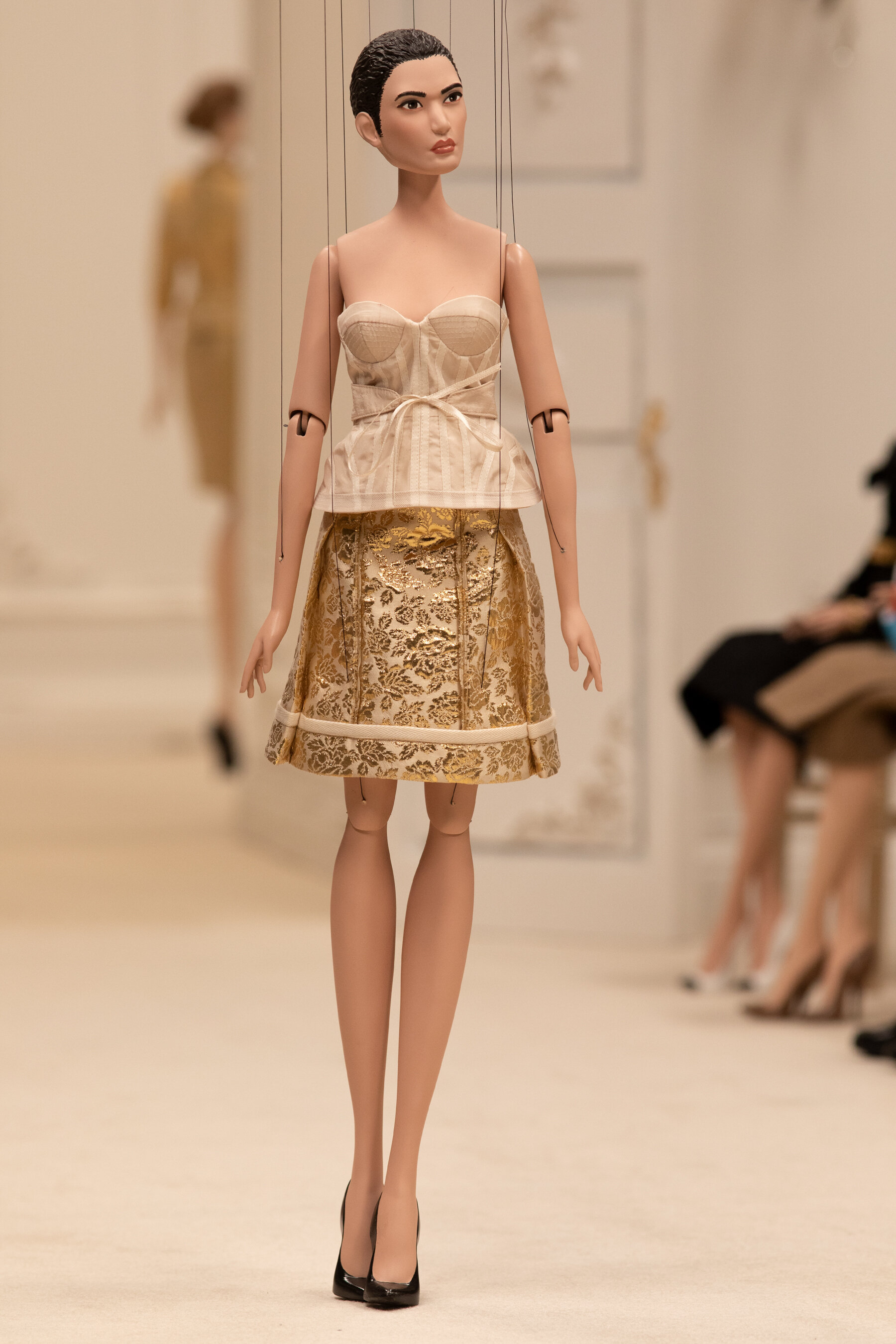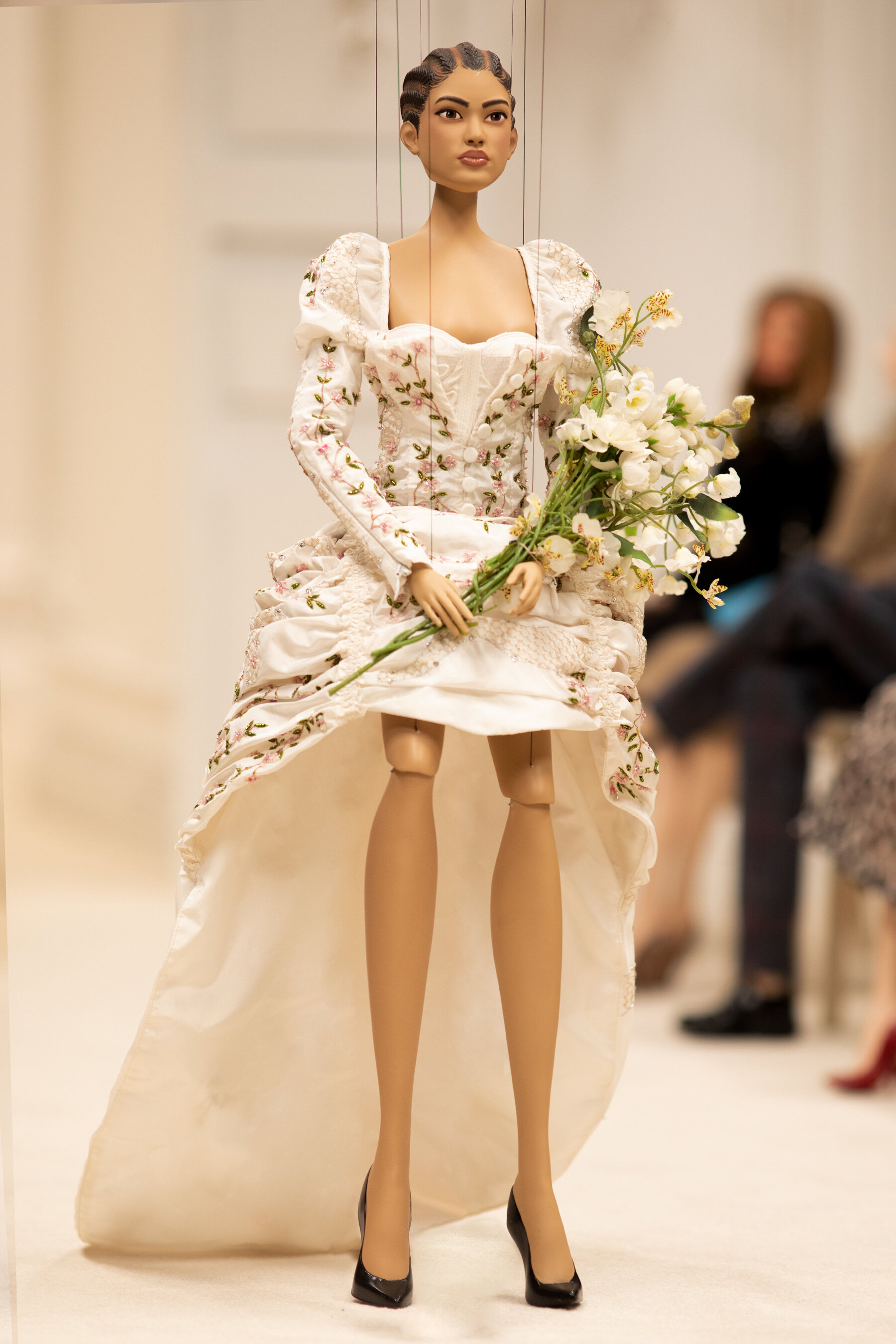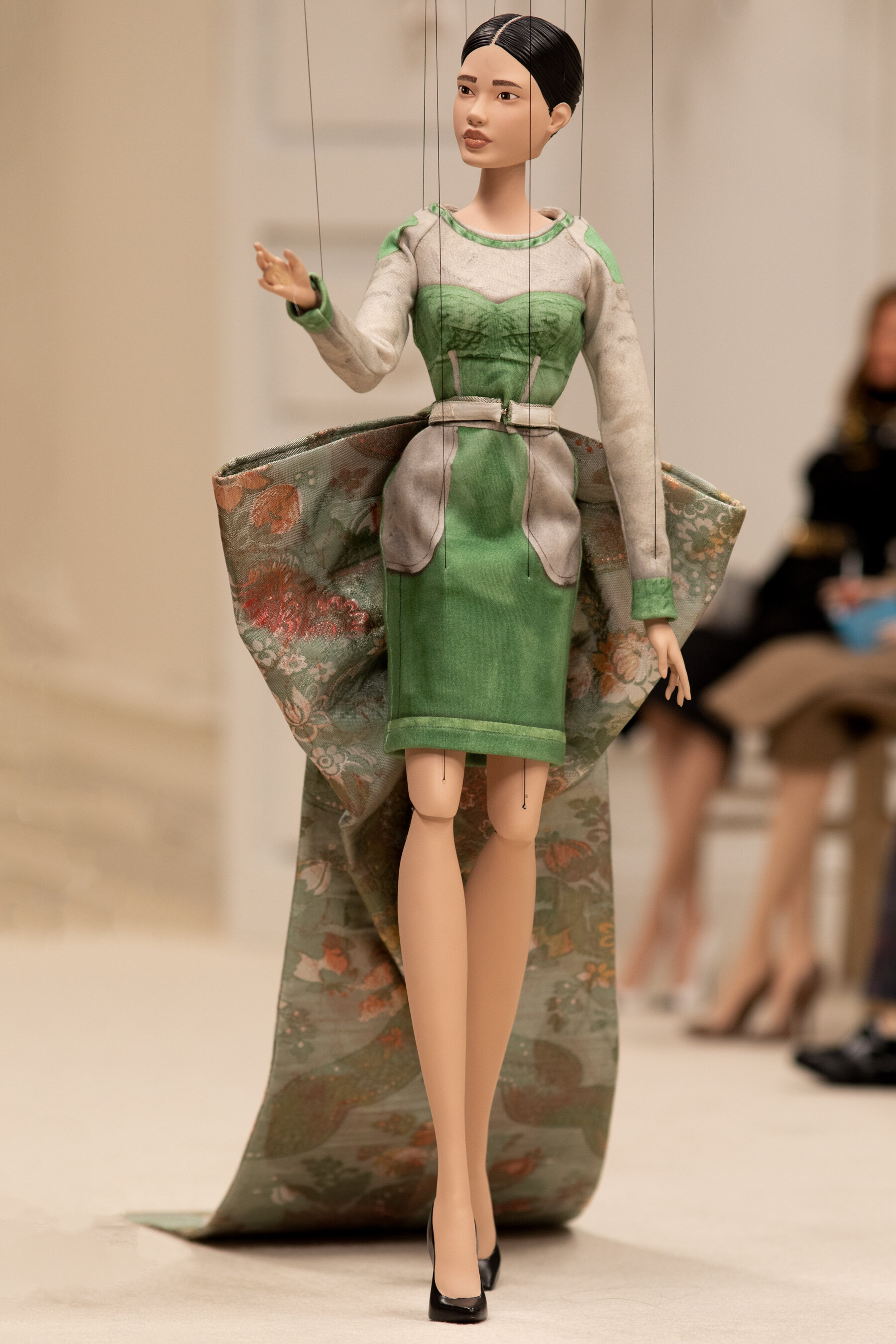As much of the world still struggles with the Covid-19 pandemic, many designers have opted to present their collections either partially, or in their entirety, via digital platforms. While many brands chose to stage and record runway shows without a live audience, others created short films in which models showcased garments in a narrative format. Moschino's Jeremy Scott, and Dior's Maria Grazia Chiuri utilized this format, but turned to dolls to bring their vision and message to life. In July, Dior released its short film, "Le Mythe Dior," in which concierges present scaled-down versions of the AW20 haute couture collection to mythical, forest-dwelling creatures who are then fitted and gifted with grand creations. In a similar move, marionette dolls presented the SS21 Moschino collection to an audience of miniature fashion press and influencers in September.
While their approach may seem lighthearted, the historical references that Chiuri and Scott invoked suggest serious, thoughtful reflections with which creators and consumers of fashion alike have been struggling this year. Both designers took inspiration from the famous Theatre de la Mode exhibition that toured Europe and the United States shortly after the end of World War II. Premiering at the Louvre in March 1945, the exhibition consisted of 237 dolls wearing unique pieces of haute couture created at a 1:3 scale. Featuring the works of couturiers such as Cristóbal Balenciaga and Jeanne Lanvin, jewelry by Van Cleef and Arpels and Cartier, and artists such as Christian Bérard and Jean Cocteau, the miniature wonders not only acted as cultural ambassadors for the fashion industry, but also raised money for a war-torn France.
The “Théâtre de la Mode” was a fashion show substitute created by Paris haute couture in 1945, during the aftermath of World War II. (Photo: anothermag.com)
In the press release for the Moschino collection (below), Scott states that “...the world has flipped. It hasn't capsized, but we are certainly living in the upside down, inside-out. The topsy-turvy.” In essence, Scott says, we’ve lost control of our lives, including within the fashion industry. His use of marionette dolls, characterized by the strings and handles that are held by a puppeteer, explicitly demonstrates his desire and attempt to regain the control that he and many other designers have lost during the pandemic. Chiuri made similar commentary, albeit with a sinister undertone; in collection notes on the Dior website, where she is quoted as saying that “surrealist images manage to make visible what is in itself invisible. I’m interested in mystery and magic, which are also a way of exorcising uncertainty about the future.” Her word choice, especially in regards to exorcism, indicates that she felt the need to take action to gain authority over something that has taken over her area of expertise and passion.
The question of the future occupies a pivotal role in both designers' collections. Chiuri sees herself as someone who can drive the industry away from its current state of flux to something more tangible; the progression of the clothing from the miniature garments in the forest, to life-size creations seen on models, demonstrates the manifestation of her goal. Scott also explicitly notes his role in rebuilding the industry by stating that "the old manual will burn. It is burning. We won’t call it a fresh start so much as it is a new start." If creating the future of fashion is something both Chiuri and Scott hope to achieve with these collections, then why do they rely so heavily on images of the past?
Because nostalgia has significant psychological pay-off, including reducing existential fears. We remember how it was, and we hope that one day, so it shall be. As psychologist David Ludden, PhD., explains, is often used “as a palliative to dampen sadness.” With their collections, Chiuri and Scott were doubtlessly trying to use nostalgia to lessen the depression that has prevailed over the industry. Ludden also points to a 2020 study that may show another, unintended consequence of the designers' work. Published in the Journal of Personality and Social Psychology: Personality Processes and Individual Differences, researchers found that although nostalgia “may be predominantly positive when nostalgic memories are generated on request, it seems predominantly negative when nostalgia is experienced in the course of everyday life.” For example, you may get a thrill out of looking at old photos when the mood strikes and you actively go through your folders. But it may feel strange and jarring to look at those old photos on a daily basis.
In the case of fashion, nostalgia, such as that brought on by Chiuri and Scott, may initially have a positive effect on consumers: watching these two short films, viewers’ nostalgic memories are produced at once, delight and surprise, even though the majority of them may not be able to access the garments that they witness.
“Backstage” at Moschino SS21 - a marionette doll’s look is prepared. (Photo: theimpression.com)
However, as time passes, and knock-offs of these designs are integrated into the collections of mass-market retailers, they become part of everyday life, and will effectively serve as reminders of the very real struggles that the fashion industry faced both during the Covid 19 pandemic and World War II. In their attempts to generate immediate, positive change in the industry this year, Chiuri and Scott may have actually inextricably linked two major world events and produced a longer-term, poignant impression that we will experience for several seasons to come.
Doris Domoszlai-Lantner is a New York-based fashion historian and archivist with a Master's in Fashion Studies: History Theory, Museum Practice from FIT, and a B.A. in History and East European Studies from Barnard College, Columbia University.
















As news of PSYKHE’s launch spreads, The Psychology of Fashion and PSYKHE’s founder Anabel Maldonado sat down with editors at Forbes and WWD to discuss the platform, the journey and why the world needs personalization powered by AI and psychology.